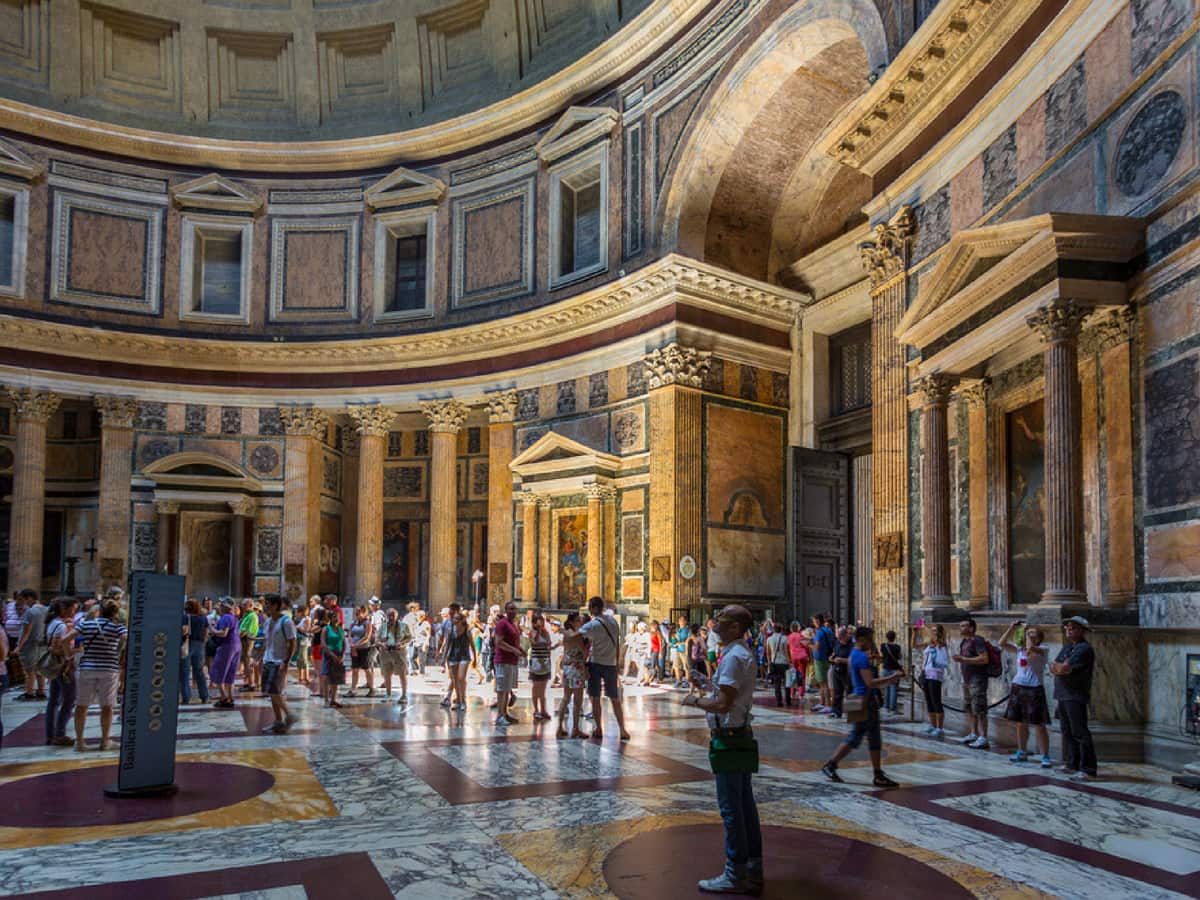Pantheon, a Greek word meaning “honor all Gods” is one of the most well-preserved monuments of ancient Rome. Built as a temple to all Gods (hence the fitting name), this extraordinary structure has stood the test of time. Just under 2,000 years, if we’re talking real numbers here. Today’s post will tell you the ins and outs of the Pantheon, from how it all began to how it stands in the modern day.

History of the Pantheon
The Pantheon is situated on the site of a building that shared its name, constructed by Marcus Agrippa, son of Augustus, in 25 BC. The original building was constructed in dedication to Romulus, the founder of Rome, following his ascension to Heaven from here. This structure was burned down in 80 AD, rebuilt by Emperor Domitian, and burned down yet again in 110 AD. Emperor Hadrian began ruling in 117 AD and had a level of involvement in the re-building of the Pantheon alongside architect Apollodorus of Damascus (fun fact: he had her killed due to disagreements with the Pantheon’s design) until his death in 138 AD.
During his time, a 73-mile-long defensive mechanism was put in place in front of the Pantheon, which is now known as Hadrian’s wall. Following his death, Trajan took over as emperor and was directly involved with the construction of the building. Unfortunately, the name of the architect who designed the Pantheon and how long it took to complete is not known to the public. The only information we have suggests that the Pantheon was completed around 126 – 128 AD. Upon seeing it, Michelangelo stated that it was the design of angels and not of man. With that in mind, the Pantheon was destined to stand the test of time!

Religious Elements
For several centuries after its construction, the Pantheon served as a Pagan temple. In 609 AD, Pope Bonifice IV received permission to convert it into a Christian church, at which point it was renamed Sancta Maria ad Martyres (or in English, St. Mary and the Martyrs). It was the first ever Roman Pagan temple to be consecrated into a Christian church. This is a crucially important factor regarding its preservation and is what saved it from being destroyed during the Middle Ages, as the papacy had the means and resources required to maintain it.

Structure of the Pantheon
The Pantheon was created in three sections, created mostly from concrete and bricks. It presents a portico, a domed rotunda and a rectangular area connecting all three areas. Its domed ceiling was the largest of its kind during this time, measuring 142 feet (43.2 meters) in diameter. It was the largest dome on record for 1300 years, and today, it’s established as the largest unsupported dome in the world. The weight of the dome meant that it required a good supportive base: the walls that it sits upon at a thickness of 20 feet.
At the top of the dome there’s an oculus, which reaches 27 feet in width. The function of the oculus was to let sunlight and rain into the Pantheon. It also had a secondary function – it acted as the connecting point between the gods and the Earth. On the interior, marble and gilt line the walls and floors of the rotunda, while the ceiling displays rows of rectangular coffers.
The Corinthian columns that support the portico weigh a whopping 60 tons each and were brought to Rome from far-away Egypt. The columns were dragged over 100km (62 miles) from the quarry to the River Nile. They were then placed on barges and vessels in order to safely transport them to Rome. Each column has an inscription that reads “M•AGRIPPA•L•F•COS•TERTIUM•FECIT”, in reference to the original Marcus Agrippa. Evidence shows that Hadrian kept this as a gesture to his predecessor.

April 21st in the Pantheon
The 21st of April is a special day to visit the Pantheon for a number of reasons. At midday on this date, light strikes the metal grill above the door and fills the outside courtyard with light, which is an extraordinary sight to see. This is made all the more special alongside the fact that April 21st is celebrated as the day that Rome was founded. It is believed that when this occurred, the emperor ruling at the time looked god-like when surrounded by this rare sunlight.

The Pantheon Today
Over the centuries, the Pantheon had many functions. Following its conversion into a Christian church, it became the burial place for monarchs (including both kings of Italy), poets and notable Renaissance figures, such as painter Raphael and architect Baldassare Peruzzi. In the modern day, it’s a major attraction for tourists to visit. It’s also still a functioning church, in which Catholic mass is held regularly.
To learn more about the Pantheon and other essential sights in Rome, check out our walking tour of the city!


